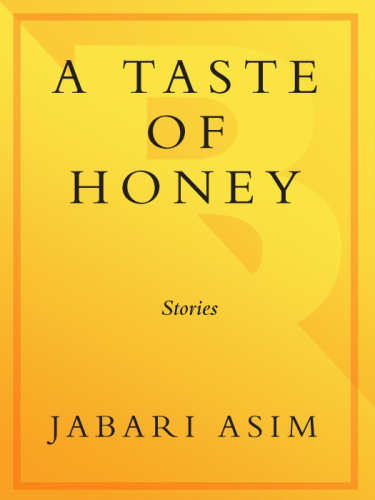
A Taste of Honey
Stories
- اطلاعات
- نقد و بررسی
- دیدگاه کاربران
نقد و بررسی

January 4, 2010
In 16 related short stories, Asim (The N Word
) illustrates the connections between African-American characters living in a Midwestern town in the tumultuous late ’60s. The focus is on the Jones family: young precious Crispus; ladies’ man Schomburg; budding radical and intellectual Ed; adoring and protective mother, Pristine, and warm, strong father, Reuben. In the opening narrative, “I’d Rather Go Blind,” Crispus describes his community as he sees it—grown men with colorful nicknames, his adolescent brothers changing before his eyes, and an emerging Black Nationalist fervor rising in his neighborhood. Crispus is particularly fond of Curly, a friendly, blind store owner who is killed by a corrupt white cop when Curly tries to protect Ed from a brutal beating. Moonshiner Octavius Givens and his best friend Leo Madison defend Leo’s mother after she’s assaulted by the white man whose family employs most of the blacks in town, and must fight to their deaths or run. Asim successfully delves into politics, domestic violence, racial identity, young love, and more in this humorous and poignant collection, although often the characters feel too rich for the format.

January 1, 2010
Though billed as a collection of stories, this fictional debut functions more like a novel, one that compensates with richness of character for what it lacks in narrative momentum.
As a journalist and an academic, Asim (What Obama Means...For Our Culture, Our Politics, Our Future, 2009, etc.) remains more concerned here with sociocultural dynamics than literary formalism. Yet he brings humanizing warmth to his fiction that makes it more than a series of didactic lessons. The setting for each of these stories is the fictional Gateway City, a Midwestern destination for African-Americans following the Great Migration from the South earlier in the 20th century. Sustaining a chronological progression—it would be hard to follow some of the later stories without familiarity with the earlier ones—they track the profound changes in the black North Side neighborhood during a pivotal year culminating in the 1968 assassination of Martin Luther King Jr. The"story" classification allows the author to employ various narrative perspectives, but many of these stories focus on a single family—with a loving mother and father and their three sons, often told through the voice of the youngest, seven-year-old Crispus Jones, who appears to be an authorial stand-in. The stories detail the emergence of Black Power militancy while the church remains the neighborhood's spiritual bedrock. They show intelligent, talented residents of various generations torn between advancing themselves through the education and employment possibilities that white culture offers and the loyalty to the neighborhood where they have a profound sense of belonging. Most of them know white people mainly through television, and the occasional intrusion by the white-power structure (a rogue cop in particular) invites no closer familiarity. Some of the earlier stories seem more like character studies, vignettes heavier on descriptive detail than plot development, but the cumulative impact is more than the sum of its 16 narratives.
However categorized, this fiction rings true.
(COPYRIGHT (2010) KIRKUS REVIEWS/NIELSEN BUSINESS MEDIA, INC. ALL RIGHTS RESERVED.)

February 1, 2010
Asim established himself as a scholar of black culture with his nonfiction titles, "What Obama Means]for Our Culture, Our Politics, Our Future" and "The N Word". With his debut work of fiction, the Guggenheim Fellow proves himself to be a promising storyteller. Weaving together a collection of stories told from various perspectives, he eloquently captures the angst, upheaval, and confusion that defined 1968 black America. Although some characters are more appealing than others, Asim creates multifaceted and realistic personalities throughout. For instance, Big Mama provides a discriminate amount of love to her dark-skinned grandchildren during the "Black Is Beautiful" period, while a revolutionary who swears to protect the community ignorantly contributes to its destruction. Domestic violence, indissoluble bonds, and the pursuit of upward mobility saturate this collection. Exceptionally notable is his nostalgic recall of black culture, as Asim interweaves doo-wop and gospel music into his pages and has one character comment, "Everybody had nicknames where we live." VERDICT This work captures the blistering experiences of Gloria Naylor's "Women of Brewster Place" and will appeal to African American literature and cultural connoisseurs.Ashanti L. White, Univ. of North Carolina at Greensboro
Copyright 2010 Library Journal, LLC Used with permission.

March 1, 2010
In 1967 in the fictional midwestern town of Gateway City, the tight-knit black community is grappling with changes large and small against the backdrop of boiling resentment of racial injustice and police brutality. Nine-year-old Crispus Jones is fair-skinned at a time when black is beautiful, the blacker the better. And with nappy hair in a family of wavy heads, he feels like the ugly duckling. Older brother Ed is just beginning to chafe under racial restrictions, while Schomburg, handsome and athletic, is self-absorbed. Their father, Reuben, is a lover of black history and a sign painter with the soul of an artist. Their mother, Pristine, keeper of family memories, is comforted by the church in her worries about her sons. The neighborhood gangster supports the church, while a blind man who sold candy and protected children from bullies is killed in a police altercation. This collection of short stories, some first-person perspectives, interweaves the lives of various characters, skillfully rendered, in a textured portrait of life in an urban community.(Reprinted with permission of Booklist, copyright 2010, American Library Association.)




دیدگاه کاربران